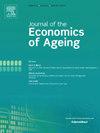COVID-19 and domiciliary care utilisation: Evidence from the English Longitudinal Study of Ageing
IF 2
3区 经济学
Q2 DEMOGRAPHY
引用次数: 0
Abstract
The COVID-19 pandemic significantly affected global health and social care, leading to unmet needs, especially among vulnerable groups. Using data from the English Longitudinal Study of Ageing (ELSA), we investigate disruptions in home care for individuals over 50. We evaluate how the pandemic changed home care use at the extensive and intensive margins; the relative risk of reporting unmet need; and access to acute and primary care for different socio-demographic groups. We find decreases in home care use (extensive margin), mostly driven by informal care, which were partially offset by an increase in the amount of care received among those who were using home care during the pandemic (intensive margin). However, the relative risk of reporting unmet need rose, particularly among ethnic minorities, individuals with musculoskeletal and mental health conditions, and those not in work or retirement (due to long-term sickness or disability, home or family responsibilities, or unemployment). Individuals living alone and those aged 50–59 faced higher unmet needs for home care, but maintained primary care access as opposed to their counterparts. Our findings suggest that while aiming to protect the most vulnerable groups, pandemic containment policies negatively affected access to vital health and social care services, thereby increasing unmet care needs and exacerbating existing inequalities.
COVID-19与居家护理利用:来自英国老龄化纵向研究的证据
COVID-19大流行严重影响了全球卫生和社会保健,导致需求未得到满足,特别是在弱势群体中。使用英国老龄化纵向研究(ELSA)的数据,我们调查了50岁以上个人家庭护理的中断。我们评估了大流行如何在广泛和密集的边缘改变家庭护理使用;报告未满足需求的相对风险;以及不同社会人口群体获得急性和初级保健的机会。我们发现,家庭护理使用减少(边际宽),主要是由非正式护理推动的,部分抵消了在大流行期间使用家庭护理的人获得的护理量的增加(边际宽)。然而,报告需求未得到满足的相对风险上升,特别是在少数民族、患有肌肉骨骼和精神健康状况的个人以及没有工作或退休(由于长期疾病或残疾、家庭或家庭责任或失业)的人当中。独居者和年龄在50-59岁之间的人在家庭护理方面面临着更高的未满足需求,但与同龄人相比,他们仍能获得初级保健服务。我们的研究结果表明,虽然旨在保护最弱势群体,但大流行遏制政策对获得重要的保健和社会护理服务产生了负面影响,从而增加了未满足的护理需求,加剧了现有的不平等。
本文章由计算机程序翻译,如有差异,请以英文原文为准。
求助全文
约1分钟内获得全文
求助全文
来源期刊

Journal of the Economics of Ageing
Multiple-
CiteScore
4.10
自引率
4.50%
发文量
46
审稿时长
49 days
期刊介绍:
The Journal of the Economics of Ageing (JEoA) is an international academic journal that publishes original theoretical and empirical research dealing with the interaction between demographic change and the economy. JEoA encompasses both microeconomic and macroeconomic perspectives and offers a platform for the discussion of topics including labour, health, and family economics, social security, income distribution, social mobility, immigration, productivity, structural change, economic growth and development. JEoA also solicits papers that have a policy focus.
 求助内容:
求助内容: 应助结果提醒方式:
应助结果提醒方式:


